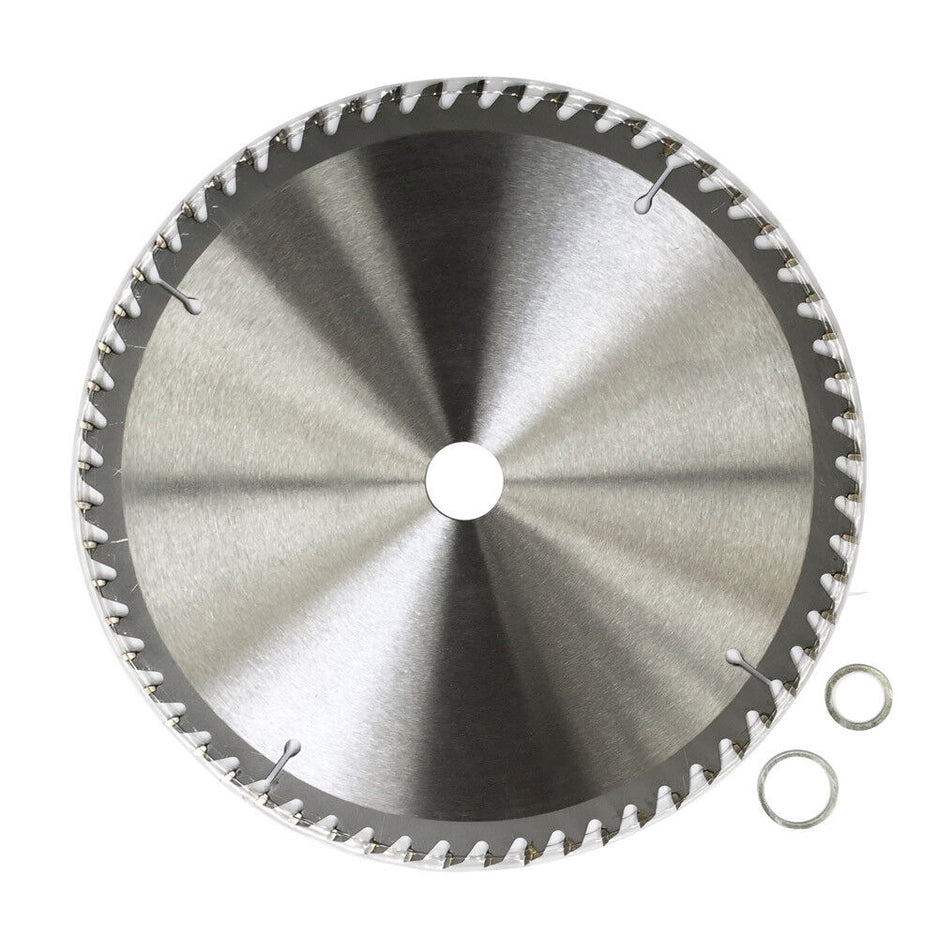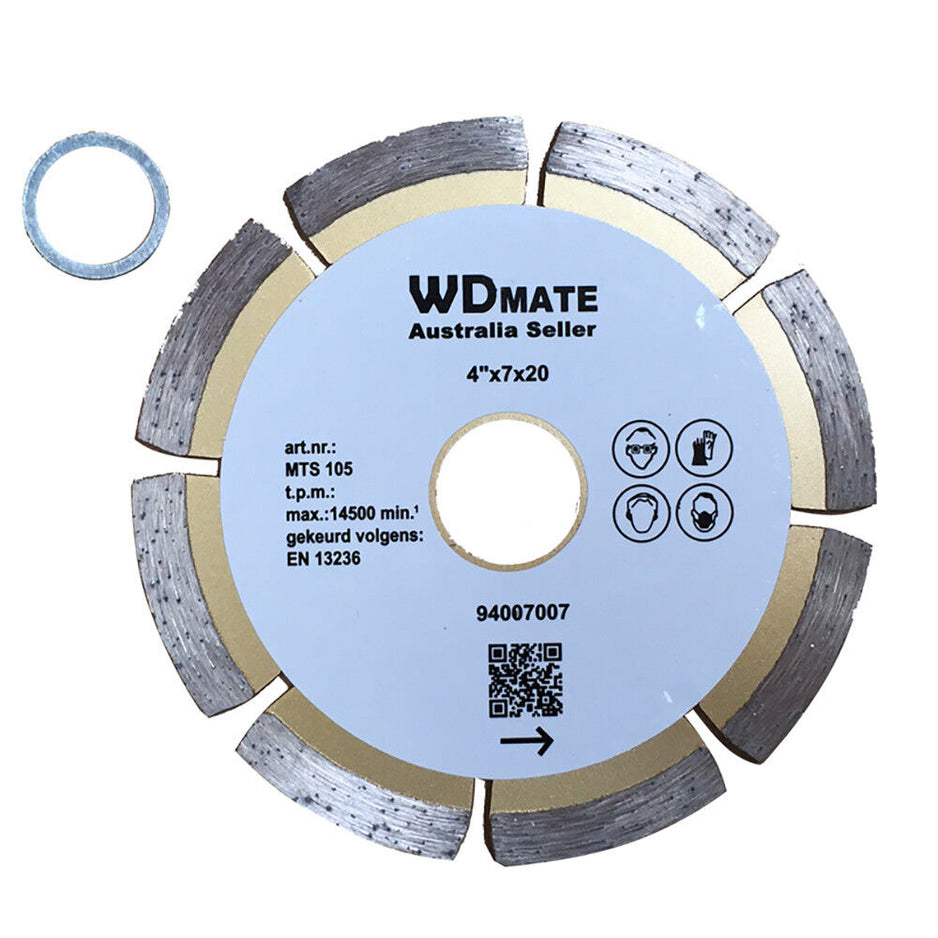sales@tecnotools.com.au
sales@tecnotools.com.au
Call us: 0433 734 100

Circular saw blades are a crucial tool for any woodworking enthusiast or professional. They come in various shapes, sizes, and tooth configurations, each designed for specific tasks. Choosing the right circular saw blade can make a significant difference in the quality of your cuts and the efficiency of your work. In this blog post, we'll explore the factors to consider when selecting a circular saw blade and provide guidance on matching the blade to your woodworking projects.
One of the most essential components of a circular saw blade is its teeth. These sharp, cutting edges are responsible for slicing through different materials with precision and efficiency. The design and layout of the teeth can vary based on the intended use of the blade. For instance, blades used for ripping purposes typically feature fewer, larger teeth that remove more material in one pass. On the other hand, crosscutting blades often have more teeth with smaller gullets to provide smoother cuts.
The gullet is another crucial part of a circular saw blade that deserves attention. Located between each tooth, these concave spaces allow for chip removal during the cutting process. Larger gullets permit faster removal of waste materials, preventing overheating and prolonging the life of the blade. Additionally, some blades come equipped with expansion slots or laser-cut vents along their bodies to enhance heat dissipation and reduce vibration.
Another vital element in understanding circular saw blades is their shoulder or body. This refers to the solid portion of metal that connects all the teeth together. The body provides stability and strength to ensure precise cuts and minimize blade deflection during operation. Depending on various factors like material thickness or type, users can choose from different shoulder widths or styles to achieve optimal performance and accuracy.
By appreciating each component's function within a circular saw blade – from its teeth's cutting abilities to its gullets' chip removal role – users can make informed decisions about which type of blade best suits their needs. Considering these factors when selecting a circular saw blade.

When it comes to circular saw blades, there's a whole world of options to choose from. From rip blades to crosscut blades, combination blades to specialty blades, each type has its own unique purpose and strengths.
Rip blades are designed for fast and efficient cutting along the grain of the wood. With their widely spaced teeth, they can remove material quickly without getting bogged down. On the other hand, crosscut blades are perfect for making smooth cuts across the grain. They have more teeth per inch than rip blades, allowing for cleaner and more precise cuts.
Combination blades offer the best of both worlds by combining ripping and crosscutting capabilities into a single blade. Their versatility makes them a popular choice among DIY enthusiasts and contractors alike. And if you're looking for something truly special, there are also specialty blades available for specific tasks such as cutting laminate flooring or metal.
By understanding the various types of circular saw blades and their intended uses, you can make better informed decisions when selecting the right blade for your project. So whether you're building furniture or tackling home renovations, choosing the right circular saw blade can make all the difference in achieving professional results in less time. Don't limit yourself to one type – explore all these options and unlock the full potential of your circular saw!
When it comes to selecting the right tooth count on a circular saw blade, many factors come into play. The type of material you are cutting, the thickness of the material, and the desired finish all need to be considered. A higher tooth count will give you a smoother cut but may take longer to complete the job. On the other hand, a lower tooth count will cut faster but may leave behind rough edges.
The configuration of the teeth is also important in determining how efficiently and effectively your circular saw blade will perform. There are various configurations available such as alternate top bevel (ATB), flat top grind (FTG), and triple chip grind (TCG). The ATB configuration is ideal for crosscutting, providing clean cuts across the grain. The FTG configuration is best suited for ripping where speed and efficiency matter more than precision. The TCG configuration excels at cutting hard materials like laminate or melamine.
Selecting the right tooth count and configuration on your circular saw blade can greatly impact your project's outcome. Carefully evaluate your requirements before making a decision. Keep in mind that there is no one-size-fits-all solution; different projects call for different approaches. Understanding these factors will put you on the path to success by ensuring clean cuts, efficient performance, and ultimately saving you time and effort in completing your woodworking projects with perfection!
Having the right blade is essential for achieving clean and efficient cuts, and one key factor to consider is the material you're cutting. Different materials have unique characteristics that require specific blade choices. For instance, when working with wood, a blade with more teeth and a lower tooth angle is ideal. This allows for cleaner cuts with minimal splintering. On the other hand, metal requires a different approach as it needs blades made from harder materials like carbide or bi-metal, which are capable of enduring the hard surfaces without dulling quickly.
When it comes to cutting laminate materials such as countertops or flooring, choosing the right blade can make all the difference in achieving precise cuts without damaging the delicate surface. Blades specifically designed for laminates typically feature fine teeth or carbide tips, ensuring smooth edges while reducing the risk of chipping or tearing through layers. These blades also tend to have a low tooth count to prevent excessive heat buildup during use.
It's important not to overlook how much influence your choice of blade can have on your cutting project's success. Understanding how different materials interact with various blade designs will not only help improve efficiency but also ensure better results overall. So next time you pick up that saw or cutter, remember that selecting the appropriate blade tailored to your material will be crucial in getting those precise and professional-looking cuts you desire.

The relationship between blade diameter and arbor size plays a crucial role in determining the compatibility of your saw. Blade diameter refers to the overall size of the cutting blade, while arbor size refers to the size of the hole in the center of the blade that fits onto the saw's spindle. It goes without saying that a blade with a larger diameter requires a larger arbor size.
One significant impact of blade diameter and arbor size is on performance. When using a larger blade with a smaller arbor, it can lead to instability and wobbling, which ultimately affects both accuracy and cutting quality. On the other hand, when using a smaller blade with a large arbor, there may be excessive play between the two components, resulting in poor alignment.
Another aspect impacted by these factors is safety. Using an incompatible combination can increase the risk of accidents or equipment damage due to improper fitting or binding during operation. It is essential to ensure proper matching between blade diameter and arbor size for optimal performance and safe usage of your saw equipment. Offer tips for choosing the correct size for your circular saw.
Maintaining the circular saw blade is crucial for its longevity and efficiency. One of the simplest yet effective tips is to clean the blade after every use. This helps remove dirt, debris, and pitch build-up that can affect its performance. Another tip is to regularly inspect the teeth of the blade for any signs of damage or wear. If a tooth is chipped or worn out, it should be replaced promptly to ensure smooth cutting.
In addition to cleaning and inspecting, proper storage plays a vital role in extending the lifespan of a circular saw blade. Storing it in a dry environment away from moisture will help prevent rust formation. Using protective covers or cases specifically designed for saw blades also safeguards them from dust and other contaminants when not in use.
Taking preventative measures during use can significantly increase the lifespan of your circular saw blade. One useful technique is reducing feed pressure when cutting dense materials such as hardwoods – forcing the blade through at high speeds can cause excessive friction and heat buildup, leading to faster wear and potential damage. By following these maintenance tips, you can maximize the lifespan of your circular saw blade and ensure consistent performance on every project.
One of the most important tools for any DIY enthusiast or professional carpenter is a circular saw. It can make quick and precise cuts in various materials, but over time, the saw blade can dull and become less effective. So how do you know when it's time to replace the circular saw blade?
Pay attention to the quality of your cuts. If you notice that your cuts are becoming rougher or ragged, this could be a sign that the saw blade has dulled. Dull blades tend to tear through materials rather than cutting smoothly. Additionally, if you find yourself having to apply excessive force or pressure on the saw to make it cut properly, it's likely time for a new blade.
Another sign that your circular saw blade needs replacing is if you start experiencing burning smells or excessive heat during use. Using a dull blade puts unnecessary strain on both the tool and material being cut, resulting in overheating. If you notice any unusual odors while using your circular saw or feel excessive heat near the blade area, stop immediately and replace your worn-out blade before continuing work.
Overall, being aware of these signs will help ensure smooth and precise cuts while using your circular saw. Don't overlook their importance; replace an old or damaged blade promptly to maintain optimal performance and safety during your woodworking projects!
TecnoTools, the renowned supplier of high-quality power tools and accessories, has recently expanded its product range in Australia by including circular saw blades. This strategic move is set to revolutionize the woodworking industry in the country and offer professionals and enthusiasts a wider selection of cutting options.
Circular saw blades are an essential tool for any woodworker looking to achieve precise and clean cuts. With TecnoTools now offering these blades, customers have access to top-notch products that are built to last. Whether it's choosing a blade with exceptional durability for tough materials or one specifically designed for fine finishing cuts, TecnoTools guarantees satisfaction with its diverse collection.
For those who value efficiency and precision in their work, these circular saw blades from TecnoTools will undoubtedly be a game-changer. Now woodworkers can effortlessly tackle any project with ease and confidence, knowing they have the best tools at their disposal. The addition of circular saw blades further solidifies TecnoTools' commitment to providing innovative solutions that enhance productivity and elevate craftsmanship across Australia's woodworking industry. So why settle for less when you can experience excellence with TecnoTools?